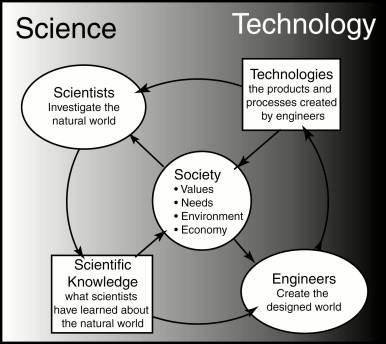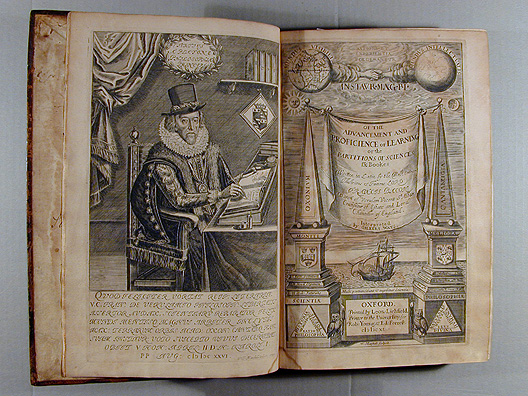Principe 6 and
Epilogue
so far the book has been about science, the first part
of this chapter will be about technology
relationship between science and technology:
- prestige and how scientists and engineers interact
- how the ideas are interrelated
- how important is capitalism--high prestige to areas
that make money today, less so in the past
- people say science deserves funding because it will
lead to new technology, somewhat true but not as true as
scientists claim
how has the relationship between science and technology
changed over time
- ancient Greeks: theoretical science was a branch of
philosophy and respected, occasionally technological
cleverness was valued, most technology was related to the
work of slaves and was beneath the dignity of educated
people
- middle ages: technology advanced mostly in the hands
of craftspeople, science was mostly separate in the
universities, a branch of philosophy
- scientific revolution: wider interest in technology,
the connection was not yet close, but there was much more
back and forth, where was seen as practical that was often
based on the approach that everything is connected rather
than the scientific method. As science becomes narrower late
in the scientific revolution it moves away from technology
- industrial revolution: mostly based on craft
technology and trial and error, but new ideas in science had
opened up new possibilities
- mid to late 19th century applied science begins to
catch up to the new technology and new discoveries in
science begin to regularly lead to new developments in
technology
- 20th century until WWII: applied science is growing
but there is still a lot of snobbery about applied science
among the people doing basic science
- today: much science is oriented towards
developing new technology (applied science), some
scientists still do basic science, technology makes new
science possible, much new technology depends upon
science, science and technology are integrated
remember the snobbery about technology that
had come down from the ancient Greeks
Principe describes architect/engineers as a new class
"between artisans who relied on accumulated manual
experience and scholars removed from practical affairs." (p.
114)
moving the
Vatican obelisk
Agricola
on mining
cartography
Christian Huygens invented the pendulum clock in 1656
- the mechanical clock had been invented
in the late middle ages but the verge
and foliot mechanism was very inaccurate
- pendulum
mechanism
- but this was still not accurate enough
at sea to measure longitude
- today solar noon in Charleston is at
12:33, solar noon in Clemson is at 12:42
- practical problem--finding
latitude--that maybe science or technology could solve
- increased scientific interest in
astronomy
- encouraged inventors of clocks
- caused governments to have an interest
in supporting science
- no one solved the problem until later
Science was not separate from practical needs

Francis Bacon
and the scientific method
- ancient science was based on philosophy
(eg. the stars and planets are unchangeable so must move
in circles)
- medieval science was based on authority
(start from Aristotle and refine) not experiment
- new early modern ideas: science should
be based on experiment, but also should be idealized
from the everyday world
- it took a while for people to understand
this enough to put words to describing a new scientific
method, to differentiate science from philosophy
- Bacon:
- science should give us power to do and
make things--people gave lip service to this but
wasn't yet usual
- inductive method--accumulate
observations first, before forming theories
- science should be a cooperative
enterprise
multiple kinds of professional societies
- networking organizations
- American Medical Association--publishes journals,
advocated for the profession
- state medical boards issue licences
- teachers unions or South Carolina Education
Association
Rise of scientific societies:
|
scientific revolution
|
today
|
where do people do science?
|
patron's court or university or
amateur's home
|
jobs in university, government and
industry labs
|
how do they interact with other
scientists?
|
books, letter writing, scientific
societies
|
papers published in journals,
professional societies, internet
|
where does funding come from?
|
patronage (rich people or leaders who
support scientists)
|
government and industry grants and
contracts |
what is the relationship between science
and technology
|
practical research to get patronage but
also the idea of understanding nature for its own sake
|
much funding for practical research but
still some prestige for understanding nature
|
The early scientific societies encouraged experiments
- Starting with the Academia naturae curiousium
in German in 1652, these published annual collections of
papers
- best known and longest lived was the Royal Society
of London: chartered in 1662, linked to a journal (Philosophical
Transactions) started in 1665
- the Académie Royale des Sciences was funded by the
king in hopes that it would lead to useful knowledge and
prestige
what was science like in the scientific revolution?
- the scientific method is being invented
- science was lots of different things, it hadn't been
narrowed down yet
- worldview: everything is connected to everything
- assumptions natural philosophers made:
- interconnectedness--all the different kinds of
knowledge affect each other
- science describes the same world the Bible does
- assumed that the earth was the center of the
universe for religious as well as scientific reasons
- assumed that science would match up with common
sense/observation
- they assumed that analogies, symbols and
correspondences had real effects
- the character of science was that all kinds of
knowledge are related
How has the character, worldview, method,
assumptions of science changed
science the early modern era?
- deep religious motivation to study the creator
through the creation is mostly gone
- less respect for history and tradition
- no longer try to see everything as interconnected
- science is now very specialized and fragmented
the old view of the scientific revolution is it was the
time when science separated from religion and magic
so what did happen?
- people got excited about the possibility of new
discoveries instead of relying on the old authorities
- this interest in science led to specialization and
the approach of simplifying problems
- very successful in speeding up the discovery of new
knowledge, but we lost the meaning that comes from living in
an interconnected world


